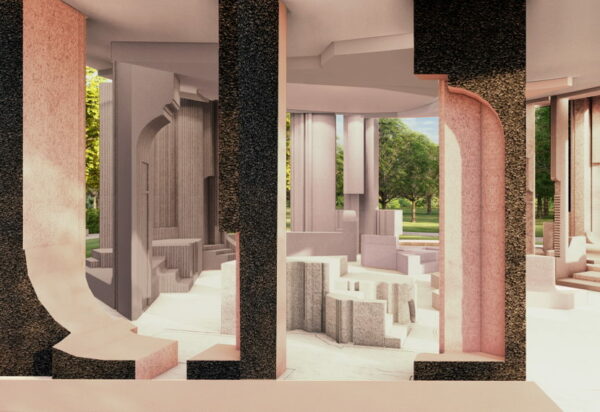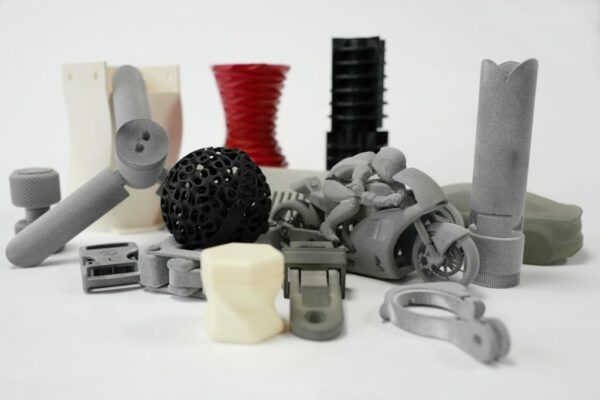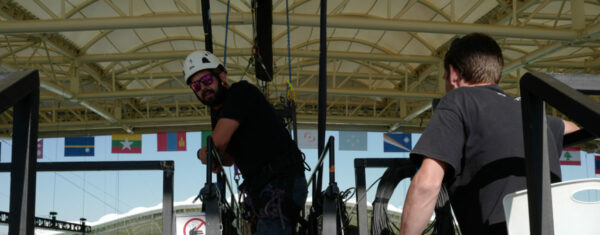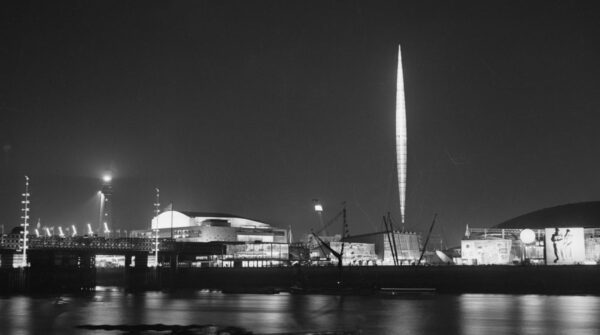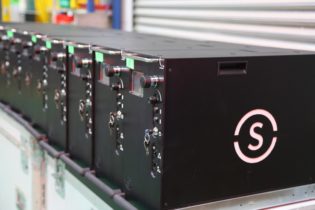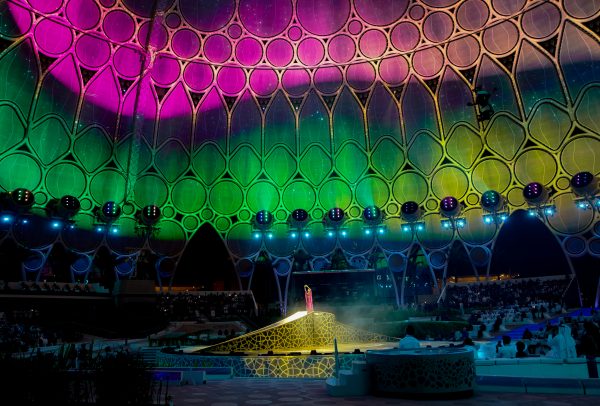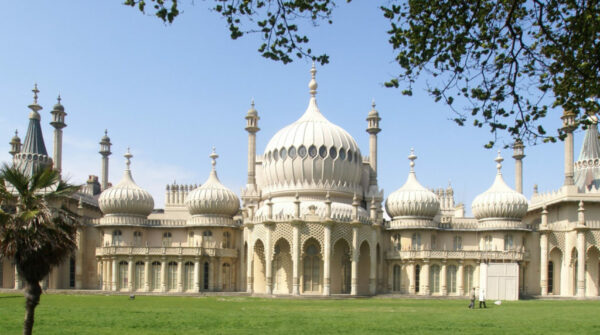
Pavilions. Everyone has their own idea of what makes a pavilion. It’s a shelter in a large park or garden. It’s an experimental structure. Perhaps a decorative folly in the grounds of a stately home. Obviously, it’s also where cricketers retire for tea. But then, if you’re in Brighton, it’s most definitely an exotic palace. Public space or private retreat. Temporary or permanent. It’s something of a fluid and flexible definition, which actually suits us just fine.
The design for this year’s Serpentine Pavilion was announced this week. This will be the twelfth pavilion we’ve constructed for the Serpentine Gallery. Each pavilion is as different from the last as you could possibly imagine, and this variety is an incredibly good match for us. It suits our varied skillset, exercises our mental agility and plays to our reverent respect for deadlines.
Pavilions straddle disciplines: They’re part structure, part art installation, part communal experience, part practical solution to the weather. In the case of the award-winning ‘Learning from Nature’ pavilion we collaborated on back in 2009, this moebius band-shaped structure also offered innovative solutions to sustainability, as did (and still does) the MultiPly project, designed by Waugh-Thistleton Architects, currently installed in Madrid. The Hive, 2015’s UK Expo pavilion (now located in Kew Gardens) addressed similar issues, in highlighting the plight of bees. It seems pavilions can also be used to give voice to important issues.
You don’t have to build them or even visit them (though obviously we’d advocate that you do) to enjoy them. Regular architectural and design festivals and pavilion-type programmes make interesting following online. As 2020 is an Expo year, come October, there’ll be even more pavilions in the offing. In the meantime, here are a few of our favourite on-going programmes…
Toronto’s Winter Stations
Not strictly pavilions (or are they?) Winter Stations probably nod to three of the four attributes listed above. This international design competition has run for the last six years and opens next week, aiming to transform Toronto’s frozen beaches with temporary installations based around existing beach lifeguard stations. This year, installations include ‘Kaleidoscope of the Senses’ by Charlie Sutherland of Edinburgh practice SUHUHA which includes an open bell tower structure and diagonal black chimney. If we were in Toronto before the end of March, we’d also like a closer look at Noodle Feed, a shared augmented reality environment by Vienna’s iheartblob.
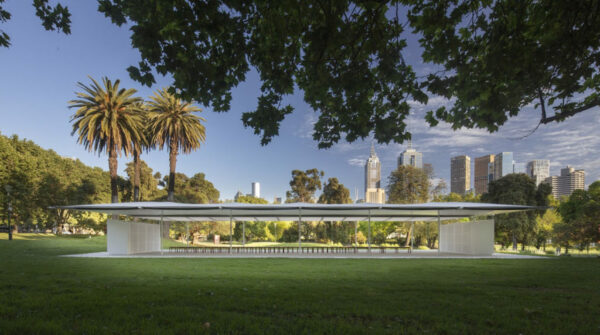
MPavilion, Melbourne
If you’re in Australia, you’ll find the 2019 MPavilion in Queen Victoria Gardens. This programme is in a similar vein as London’s Serpentine Pavilion, a pretty prestigious architectural commission which provides a focus for a season of cultural events. Previous architects have included AL_A’s Amanda Levete who designed a deceptively strong canopy of 52 delicate resin petals. This year, it’s designed by Australia’s Pritzker Prize-winning Glenn Murcutt, who’s thoughtful architecture motto is ‘Touch the earth lightly’. Very apt for a pavilion.
What’s also nice is that the previous five MPavilions have all been relocated in public spaces in and around Melbourne, perpetuating the idea of a pavilion as a community meeting place.
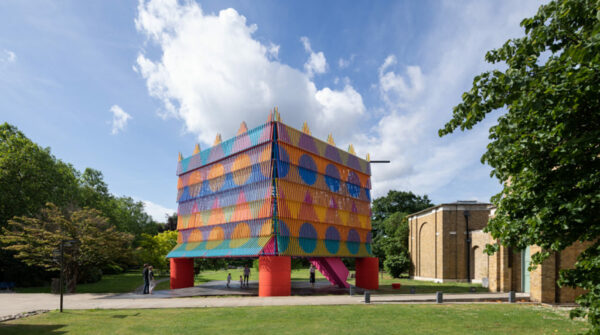
Dulwich Pavilion
Organised by the London Festival of Architecture and Dulwich Picture Gallery, this competition may only be two pavilions old, but IF_DO’s elegant, reflective 2017 pavilion and Pricegore and Yinka Ilori’s 2019 bold and joyous pavilion drew inspiration from the John Soanes-designed gallery and visually, pretty well sum up pavilion diversity in two hits.

National Trust’s Folly!
A folly takes the idea of a pavilion in a whimsical, fanciful direction. Here’s a programme that’s local to us.
The National Trust’s ‘folly!’ is now entering its fourth year. The programme is site specific, using temporary structures and installations to uncover the hidden histories and stories behind the Georgian water gardens at the World Heritage site of Studley Royal, adjacent to Fountains Abbey. We got involved with this programme a couple of years ago, helping bring the competition-winning design of 11 year-old Foster Carter to life. His folly, The Cloud, completely turned the idea of shelter on its head, storing water and well, you can guess what happened when you walked underneath.
This year, we’re delighted to be involved with the programme again, working with artist Steve Messam. The eccentricity of ‘folly!’ is delightful and fun.
A Pavilion is a flexible architectural open space that invites people to come in and spend time in it. It could be temporary or permanent and might even change its form and function. A Pavilion might be used as a: shelter, seating, meeting point, cafe, theatre, or for lectures, events, exhibitions, sports, play, relaxation, work and much, much more.Serpentine Gallery
We love the vagueness of the definition. As a visitor, it means we’ll be in for a surprise. As a business, it means we have no idea what we’ll be asked to build next. And that’s exciting.
